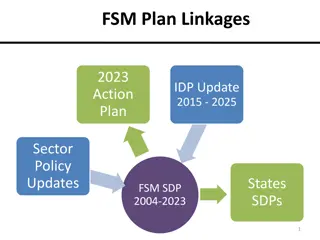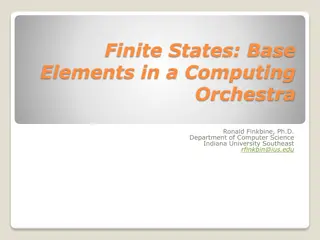
Insights into Merchant Banking and Its Significance
Discover the world of merchant banking, an entity specializing in financial activities for clients with a focus on corporate matters, international trade, and expert advice on mergers and acquisitions. Learn about its history, functions, and key features, as well as the regulatory framework in India and the USA.
Download Presentation

Please find below an Image/Link to download the presentation.
The content on the website is provided AS IS for your information and personal use only. It may not be sold, licensed, or shared on other websites without obtaining consent from the author. If you encounter any issues during the download, it is possible that the publisher has removed the file from their server.
You are allowed to download the files provided on this website for personal or commercial use, subject to the condition that they are used lawfully. All files are the property of their respective owners.
The content on the website is provided AS IS for your information and personal use only. It may not be sold, licensed, or shared on other websites without obtaining consent from the author.
E N D
Presentation Transcript
Introduction Merchant banking is an entity that performs different types of financial activities for its clients. It does not provide an regular banking services to regular public. Merchant bank provides advisory services on corporate matters to the firms in which they invest. They are also experts in international trade, which make them specialists in dealing with multinational corporations. They also give expert advice on mergers and acquisition, and, Project counseling.
In the USA, the historical term Merchant bank refers to an Investment Bank . Their activities are regulated by SEBI. Popular merchant banks of India are: 1. JP Morgan 2. JM Financial 3. Goldman 4. Citi
Definition Rule 2(E) of SEBI rules 1992, defines Merchant Banking as, any person who is engaged in the business of issue management either by making arrangements regarding selling, buying, or subscribing to securities as manager-consultant, advisor or rendering corporate advisory services in relation to such issue management.
Features Providing consultancy services is the key feature of merchant banking in India Acts as an financial engineer. Promotion of financial surplus. A variety of services are offered to help in the growth of capital markets.
Objectives Channelizing the financial surplus of the general public into productive investment avenues. Providing long term funds to projects or companies. Portfolio management Corporate advisory and issue management
History Merchant banking started in Italy in late medieval times Reached in France during the seventeenth century Italian merchant bankers introduced merchant banking in England in eighteenth century European bankers developed merchant banking in USA In 1972, merchant banking started in south Africa In 1967, National Grindlays bank started merchant banking in India
Merchant banking in India Till early 1960s, there was no merchant banking in Indian banking system. It was the Grindlays Bank which started merchant banking services in 1967. In 1967, the Reserve Bank of India(RBI) granted license to The National Grindlays Bank to perform the services relating to issue management. On the recommendation of Banking commission, State Bank of India(SBI) became the first Indian Bank to start with the merchant banking activities in 1972-73. The other banks that followed the SBI were Central Bank of India, Bank of India, Syndicate Bank started merchant banking services in 1977. Among the development banks, ICICI Bank started merchant banking in 1973, followed by IFCI(1986) and IDBI(1991).
Merchant bankers Commission Merchant banking activities are regulated by 1. Guidelines of SEBI and ministry of finance. 2. Companies Act 1956 Merchant bankers are eligible to charge commission from their clients as detailed below: 1. A merchant banker can charge 0.5% as the maximum commission for the whole issue. 2. They can charge project appraisal fees. 3. Brokerage commission 1.5%. 4. Underwriting commission.
Underwriting Commission Types of securities On amount devolving on underwriters On amount subscribed by public Equity shares 2.50% 2.50% Preference Shares/Debentures Up to Rs. 5,00,000 2.50% 1.50% More than Rs. 5,00,000 2.00% 1.50%
Services of merchant banker It is the intermediary between the company and the issue of capital Various stages are: 1 Business planning stage 1. 2. Project Feasibility study Advise on capital structuring 2 Equity raising stage 1. 2. 3. 4. Pricing decision Underwriting to the issue Post issue management Assistance in ADR/GDR 3 Debt raising stage 1. 2. Management of debenture issue Loan syndication 4 Strategic advice stages 1. 2. 3. Advise on expansion program Advise on mergers and acquisition Corporate structuring advise.
Project feasibility study Advice on capital structuring. 1. Business planning stage: 1. Equity raising stage : Preparation of prospectus & liaison with SEBI Pricing decisions Marketing in the capacity of lead managers
Underwriters to the issue Post issue management Assistance IN ADR/ GDR 3. Debt raising stage: Management of debenture issue Preparation of bankable proposal & syndication of loan
Assistance in arranging optimal finance 4. Working capital raising stage: 5. Strategic advice Advice on expansion programme Advice on mergers & acquisitions Corporate structuring advice stage:
Qualities of good merchant bankers LEADERSHIP AGGRESSIV E ACTION ATTITUDE TOWARDS PROBLEM SOLVING CO-OPERATION AND FRIENDLINESS
Responsibilities of merchant bankers Pricing of the issue Investor protection Legal aspect Project evaluation
Guidelines for merchant bankers The merchant banker should have a professional qualification Should comply with the SEBI regulations and submit reports accordingly- Permission 3 years license Proper fees authorization annual renewal /should be collected by SEBI Category I leader 5crore (issue mgmt., portfolio management, underwriter, advisor) C ii 50L portfolio management, underwriter, advisor) C iii 20L underwriter, advisor C- iv ---- advisor Proper information should be given when inspected by SEBI The Merchant banker will be suspended if found violation of guidelines
Scope of merchant banking in India Entry of foreign investors. Corporate restructuring. Growth of new issue market. Innovation in financial investments.
Challenges Entry Restrictions Industry comparmentalisation MB, HP,LEASING, VENTURE C MALAFIDE PRACTICES NON COOPERATION COMAPANIES POOR NEW ISSUES MARKET
Main merchant banking companies Public sector 1. Bank of Maharashtra 2. Punjab national bank 3. IFCI financial services LTD Private sector 1. Axis bank LTD 2. Kotak Mahindra capital 3. Yes bank LTD
Conclusion Merchant banking plays a very important role. It helps the corporate companies to develop in various fields of business. Function of merchant bankers varies from country to country In india merchant bankers are allowed to undertake those activities which are related to securities market including issue management and are prohibited from carrying on fund based activities.






















